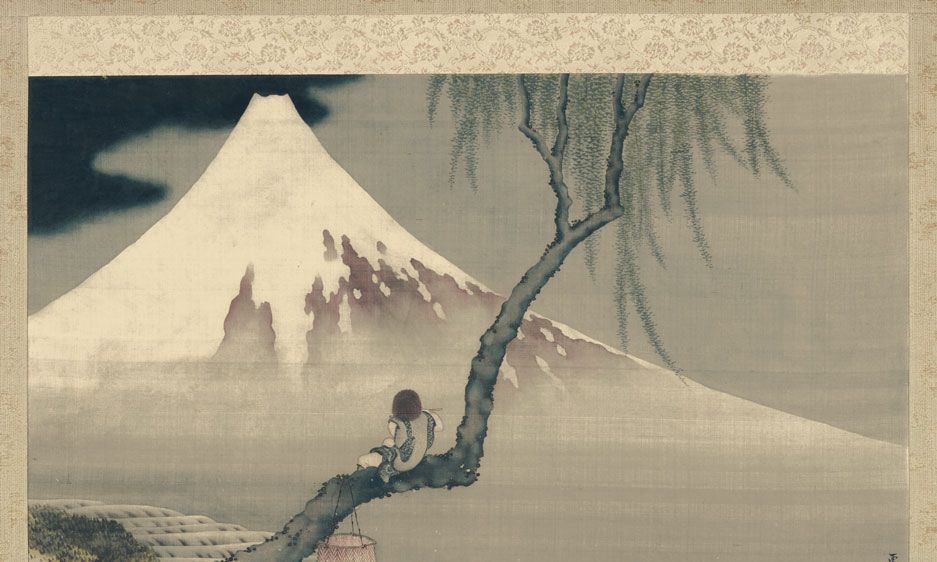One of Hokusai's many depictions of Mount Fuji
The Japanese artist Katsushika Hokusai, best known for his printThe Great Wave, was obsessed with Mount Fuji, a passion which reflected his quest for artistic immortality (Fuji is a symbol of eternal life according to Buddhist doctrine).This new volume includes every illustration from Hokusai's Thirty-six Views of Mount Fuji (1830-32) and the three volumes of his subsequent One Hundred Views of Mount Fuji (1830s). “It is a visual biography that traces the shifts in Hokusai’s long artistic career through his depictions of Fuji. In this way, through Mount Fuji, this volume traces a history of Hokusai’s oeuvre overall,” says a publisher’s statement.
Caroline Chapman delves into how artists’ studios “reflect their personalities, the way they work, their dreams and obsessions”, says a publisher’s statement, taking readers into the workspaces of artists such as Michelangelo, Vincent van Gogh and Théodore Géricault. Chapman explores the lives and practices of artists over the centuries through 140 images, adding colourful touches such as this description of how models were chosen in the late 19th century: “Italian models were considered the best in both figure and temperament. Their feet came in for particular praise: English women tended to have bad feet because they wore pointed shoes, but the feet of Italian models, bare in childhood and then clad in simple sandals, kept their shape. In his inaugural lecture at the Slade School in 1871, Edward Poynter assured students that he would provide them with the best Italian models as […] ‘they have a natural beauty, especially in the extremities which no amount of hard labour seems to spoil’.”
The long-awaited catalogue raisonné of works by the late Italian artist Carol Rama is divided into two parts: volume one includes critical texts by scholars such as Fabio Belloni while the second volume encompasses “a complete set of illustrated technical and historical descriptions of the works compiled by Raffaella Roddolo [of the Archivio Carol Rama]”, according to a publisher’s statement. The self-taught artist Rama, who died in 2015, won the Golden Lion at the Venice Biennale in 2003. Her pieces defied categorisation but her work bore the hallmarks of Surrealism, moving from figurative psychosexual watercolours in the 1940s to the mixed-media Bricolage collageworks of the 1960s.
The book springs from a X/Twitter account of the most bizarre illustrations from the Middle Ages launched by Olivia Swarthout, a data scientist based in London. Images include a depiction of Christ’s side wound, which people have noticed is “very vaginal”, says the author, and a picture of a man being stabbed in the head from a book of songs by different composers. “There’s so much contained in this art—and particularly in the fact that a lot of it isn’t all that well-executed or approached with the artistic precision that we’re familiar with—that actually tells us so much about medieval life,” Swarthout recently told The Guardian.

